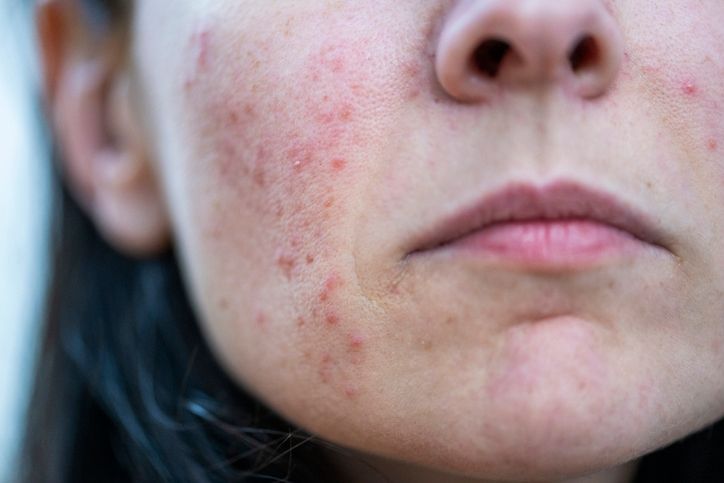
Author: Natalie Ng|Updated: 15 May 2025
Better hair removal starts with avoiding a few common mistakes. Things like skipping skin prep, using the wrong method for your skin type, or rushing treatments can lead to skin irritation, ingrown hairs, and patchy results. Laser hair removal works best when it’s planned right—especially if you have sensitive skin, recent sun exposure, or are using certain medications. Post treatment care also matters more than people think. Simple things like avoiding hot showers or swimming after a session help protect the treated area and support smooth, hair free skin. Want better, longer-lasting results? Keep reading to avoid the most common hair removal mistakes.

Skipping Proper Pre-Removal Skin Preparation

Clean, Dry Skin Is Key
Start by making sure the treatment area is clean and dry. Any leftover oils, lotions, or sweat can block hair follicles and reduce the laser's ability to target the hair root. They can also cause uneven results or skin irritation.
Gently Exfoliate Before Hair Removal
Light exfoliation a day before treatment helps remove dead skin cells, clears clogged pores, and lowers the chance of ingrown hairs. This is especially helpful before using hot wax or laser treatment.
Prep Based on the Hair Removal Method
• For shaving: Use warm water to soften the hair, then apply a hydrating shaving cream. This reduces friction and helps prevent irritation.
• For waxing: You can use a pre-waxing oil or powder to protect the skin and make the hair easier to remove from the hair root.
• For depilatory creams: Always do a patch test 24 hours before. This helps you avoid reactions, especially if you have sensitive skin.
• For laser hair removal: Avoid sun exposure and fake tan for at least two weeks before your first appointment. Tanned skin or recent sun exposure increases the risk of side effects.
Proper prep supports better results and helps prevent uneven texture, irritation, and blocked hair follicles. It also sets the stage for a smoother hair removal process and long-term skin care.

Using Wrong Techniques for Your Skin Type
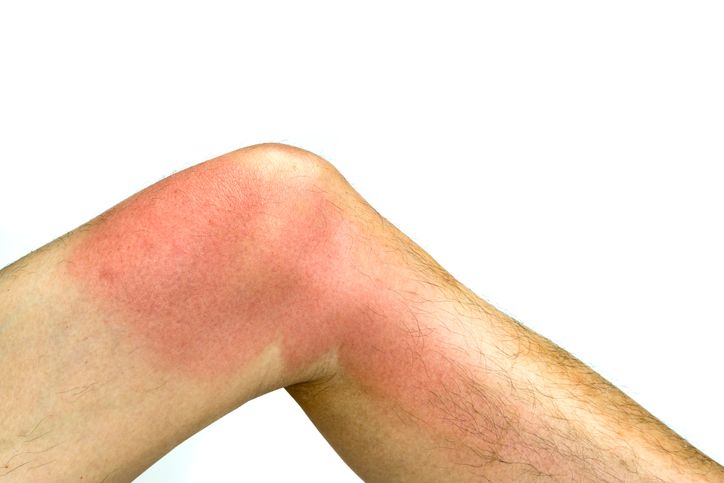
Match the Method to Your Skin’s Needs
Choosing the right hair removal method for your skin type is key to avoiding irritation, redness, or long-term skin damage. Many common hair removal mistakes come from using harsh products or tools on skin that can't tolerate them.
• Sensitive skin: This skin type reacts quickly to heat, friction, or active ingredients. Hot wax or strong depilatory creams can cause burns, rashes, or inflammation. Instead, use gentle razors made for sensitive skin or try threading, which doesn't involve chemicals or heat.
• Acne-prone skin: Avoid waxing on areas with active breakouts. Waxing can spread bacteria, leading to more breakouts or skin infection. Use a clean electric trimmer or a single-blade razor, and avoid going over the same area multiple times.
• Resilient skin with coarse hair: If your skin doesn’t react easily and your hair is thick or stubborn, stronger options like epilating or waxing can help remove hair from the root. These methods give smoother results for longer and slow down hair growth.
Don’t Ignore Your Skin Tone
Laser hair removal works differently depending on your skin tone. The laser targets the pigment in hair follicles, so using the wrong wavelength can cause burns or discoloration, especially on darker skin tones.
• Light skin tones: Most laser devices can safely target the contrast between dark hair and light skin.
• Darker skin tones: Certain lasers like Nd:YAG are safer, as they bypass the skin's surface and focus more directly on the hair root without affecting the surrounding pigment.
Laser energy that isn’t matched to your skin tone increases the risk of burns, scarring, and uneven results. Always work with a trained professional who knows how to select the right laser for your skin and hair.
Using the wrong technique doesn’t just lead to discomfort—it can also limit the effectiveness of your treatment plan. Choosing the right method protects your skin and helps you achieve smoother, longer-lasting results.
Read More
Book Now to Experience
A3 Laser Hair Removal Treatment
1 Minute Self-Registration
Date should not be before minimal date

Poor Timing and Frequency of Hair Removal

Timing Affects Results
One of the most overlooked hair removal mistakes is getting the timing wrong. Removing hair too often or waiting too long between sessions can lead to uneven results, irritation, and ingrown hairs. Your skin needs time to recover, and your hair needs to be at the right stage for the method to work well.
• Shaving: Do it when your skin is warm and soft—usually right after a shower. This helps the razor glide smoothly and lowers the risk of nicks or razor burn.
• Waxing: Wait until hair is at least 1/4 inch long. If it’s too short, the wax won’t grip properly. If it’s too long, the process can be more painful and less effective.
• Laser hair removal treatment: Sessions should be spaced 4 to 6 weeks apart. This allows the laser to target hair in its active growth phase for better, long-term results.
Don’t Overdo It
Trying to stay hair free by removing hair too often can irritate the skin and weaken the skin barrier. This is especially true for sensitive skin or areas like the bikini line or underarms. Overuse of any hair removal method—whether shaving, waxing, or using a laser device—can damage the hair follicles or lead to patchy results.
Plan Around Your Schedule
If you’ve got a big event, don’t do hair removal the day of. Aim for 2–3 days before to give your skin time to settle and reduce the chance of redness, bumps, or other side effects. Also, avoid sun exposure or tanning beds before and after hair removal, especially with laser treatment, to prevent skin damage or hyperpigmentation.
Getting the timing right helps your skin stay calm, your hair removal treatment work better, and your results last longer.

Common Post-Removal Care Mistakes

Skipping Aftercare Can Damage Skin
Post treatment care is just as important as the hair removal process itself. Ignoring it can cause irritation, ingrown hairs, or even skin damage—especially if you’ve had a laser treatment or removed hair from a sensitive area.
Avoid Heat, Friction, and Sweat
Right after removing hair, your skin is more sensitive and needs time to recover. One of the most common hair removal mistakes is exposing the treated area to heat and friction too soon.
• Skip hot showers, saunas, and swimming for at least 24 hours. Heat can increase inflammation, while chlorine or saltwater may irritate open hair follicles.
• Avoid tight clothing around the treatment area, especially after waxing or laser. Friction can trap sweat and bacteria, increasing the risk of breakouts or ingrown hairs.
• No workouts right after—sweat can lead to clogged pores and skin irritation.
Don’t Use Harsh Products
Freshly treated skin is sensitive to active ingredients. Avoid alcohol-based toners, fragranced lotions, or exfoliants in the first 24–48 hours. These can sting or cause redness and peeling. If you need to moisturize, use a plain, fragrance-free soothing lotion to calm the skin and lock in hydration.
Give Skin Time to Heal
Many people exfoliate too soon or pick at ingrown hairs, which delays healing and can cause scarring. Wait at least 48 hours before gently exfoliating. If you see ingrown hairs, use a clean, warm compress instead of picking.
Protect from the Sun
After any hair removal treatment—especially laser—you should avoid sun exposure. The skin is more prone to UV damage. Always use broad-spectrum sunscreen on exposed areas, or cover with protective clothing. This prevents dark spots, burns, and other potential side effects.
Proper aftercare supports long-term skin health, improves results, and lowers the risk of irritation. Simple habits like avoiding heat, choosing the right skincare, and giving your skin time to recover all make a big difference.
Book Now to Experience
A3 Laser Hair Removal Treatment
1 Minute Self-Registration
Date should not be before minimal date

Choosing the Wrong Hair Removal Method
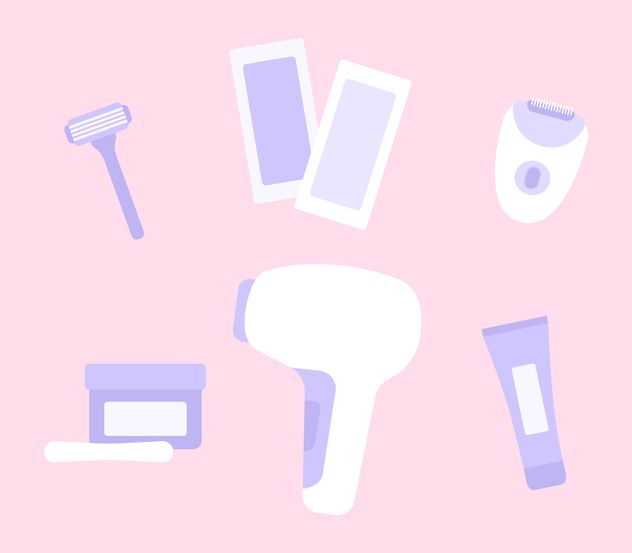
Not Every Method Suits Every Skin Type
One of the most common hair removal mistakes is picking a method just because it’s popular or convenient, without considering your skin type, hair texture, or the treatment area. This can lead to irritation, uneven results, or even long-term skin damage.
• Sensitive skin: If you’re using retinoids or have naturally reactive skin, avoid waxing and strong chemical creams. These can strip the skin barrier and cause burns or redness. Opt for gentle methods like electric trimmers or depilatory creams labeled for sensitive skin.
• Coarse, curly hair: Shaving can worsen ingrown hairs, especially along the bikini line or underarms. Laser hair removal is often a better option for long-term reduction and smoother skin.
• Facial hair: Frequent tweezing or threading can irritate the skin, especially around the upper lip or chin. A laser treatment may offer a more effective solution, especially for thicker or darker hairs.
Method Should Match Hair and Skin Tone
Laser devices are not one-size-fits-all. The effectiveness of laser energy depends on the contrast between your skin tone and hair color. Using the wrong laser or an unapproved device can cause burns, discoloration, or skin irritation.
• Darker skin tones: Only use lasers specifically designed for melanin-rich skin (like Nd:YAG). These target the hair follicles without damaging surrounding skin.
• Lighter skin tones: Many types of lasers work well, but proper calibration still matters for safety and results.
Think Beyond Trends
Just because a method works for someone else doesn’t mean it’s right for you. Some areas of the body need more care. For example, using hot wax on the face or bikini line might lead to inflammation if your skin is too sensitive. On the other hand, using a mild topical cream might not be strong enough for thicker hair on the legs.
Choosing the wrong method slows down the hair removal process and increases the risk of side effects. Picking the right technique—based on your hair type, skin condition, and the treatment area—leads to smoother results and fewer complications.

Using Unsafe or Low-Quality Tools
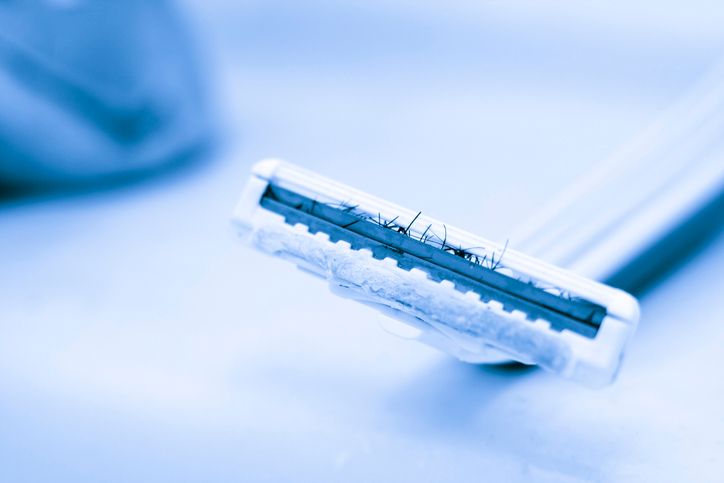
Poor-Quality Tools Increase Risks
Using old razors, counterfeit laser devices, or expired topical creams is a major cause of skin damage during hair removal. These tools can affect how well the treatment works and raise your risk of infection, irritation, or even long-term skin issues.
• Dull razors: These don’t cut cleanly. Instead, they tug at the hair, increasing the chance of razor burn, small cuts, and ingrown hairs. Replace razors regularly—ideally after 5–7 uses.
• Counterfeit laser devices: These often claim to offer permanent hair reduction but may lack the proper settings or safety features. They can burn the skin or cause uneven results. Always use approved laser devices under professional supervision.
• Old or shared tools: Reusing waxing strips or sharing razors spreads bacteria. This increases the risk of breakouts or infections, especially on areas with open hair follicles.
Check Ingredients and Labels
If you’re using topical creams or hair removal products, look at the ingredients. Products with harsh alcohols, strong fragrances, or certain active ingredients can trigger skin irritation—especially if your skin is already sensitive or freshly treated.
Also, avoid using over-the-counter drugs or creams that increase skin sensitivity before any hair removal treatment. Some medications make skin more prone to damage, especially during laser treatment or waxing.
Invest in Safe, Effective Tools
Spending a little more on good tools can prevent a lot of skin problems later. Use razors designed for sensitive skin, creams made for your skin type, and always confirm the safety certifications of any laser device. Avoid fake tan before laser treatments, as it can interfere with the laser’s ability to target the hair root accurately.
Using the right tools helps protect your skin, supports a smooth hair removal process, and improves your chances of getting optimal results from each session.
Book Now to Experience
A3 Laser Hair Removal Treatment
1 Minute Self-Registration
Date should not be before minimal date

Ignoring Medical Conditions and Medications
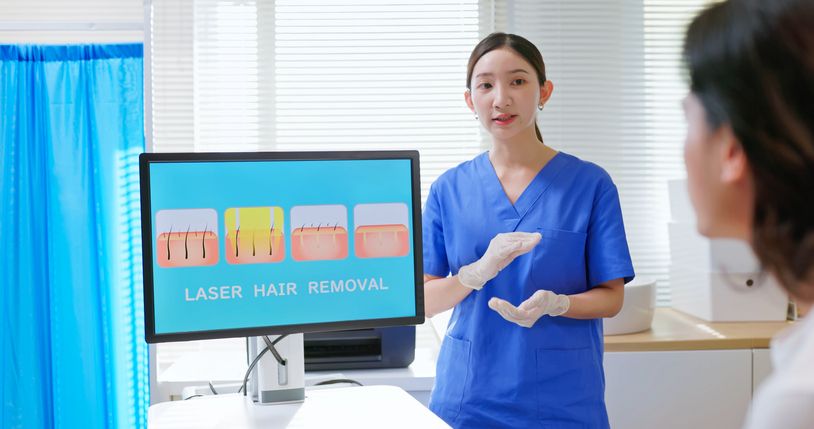
Some Treatments Aren’t Safe for Everyone
A lot of people don’t realize that certain medications and health conditions can make hair removal riskier. Skipping this step in your treatment plan is one of the more serious common hair removal mistakes.
• Photosensitive medications: Some over-the-counter drugs and prescriptions (like certain antibiotics, acne meds, or birth control pills) can make your skin more sensitive to light. If you’re using these, laser hair removal treatment may increase your risk of burns or skin irritation.
• Active skin conditions: If you have eczema, psoriasis, or active acne, removing hair in affected areas can worsen flare-ups or lead to infection. These areas need gentler care or may need to be avoided entirely during treatment.
• Recent cosmetic treatments: If you've recently had chemical peels, microdermabrasion, or used topical retinoids, your skin is more fragile. Waxing or laser on freshly treated skin can cause peeling, burns, or long-lasting sensitivity.
Always Talk to a Professional
If you’re planning a hair removal treatment—especially laser—it’s important to share your medical history, medications, and recent skin care treatments with a professional. They can adjust your treatment plan to reduce risks and help you avoid potential side effects.
Ignoring these factors doesn’t just affect your results. It can lead to serious skin damage, including burns, pigment changes, or long-term irritation. Being honest about your health and medication use helps you get safer, more effective treatment.

A3 Laser Hair Removal Treatment: Long-Term Results Without Common Mistakes
Many common hair removal mistakes come from using the wrong tools, methods, or timing—leading to irritation, uneven results, and constant regrowth. The A3 Laser Hair Removal Treatment offers a reliable solution by treating hair at the root using precise laser energy, while protecting the skin with advanced cooling technology.
How A3 Laser Hair Removal Works
This treatment uses an 808nm wavelength laser to target melanin in the hair follicles. The laser energy penetrates deep, shrinking the capillaries that feed each hair root. This helps stop hair growth from the source, resulting in permanent hair reduction over a full course of sessions.
The handpiece has a 10mm x 10mm square tip, which treats about 500 hair strands per second, covering larger areas quickly without missing patches. A built-in dual cooling system soothes the skin during the process, reducing the risk of skin irritation, redness, or burns—especially helpful for those with sensitive skin or low pain tolerance.
How It Helps You Avoid Common Hair Removal Mistakes
Choosing the wrong hair removal method for your skin or using low-quality tools often leads to skin damage, ingrown hairs, and uneven results. The A3 Laser Hair Removal Treatment addresses these issues by offering a safe, professional, and non-invasive approach.
• No need to shave daily or worry about the wrong direction of hair removal
• Reduces the risk of hyperpigmentation, which can happen with at-home or poorly done treatments
• Works for both coarse and fine hair, making it suitable for most treatment areas like legs, underarms, chest, or arms
• Keeps the skin smooth, helping to prevent bacterial buildup caused by excessive hair growth
Benefits of A3 Laser Hair Removal
• Quick and effective hair removal with full skin coverage
• Permanent hair reduction over multiple sessions
• Brightens skin by breaking down melanin build-up from past shaving
• Soothing experience with integrated cooling, helping prevent irritation
• Safe for most skin types, without downtime or harsh side effects
If you’re tired of repeating the same hair removal process and dealing with skin issues, the A3 Laser Hair Removal Treatment can help you get long-lasting, smoother skin—without the usual mistakes.
Book your appointment now to start your journey toward hair free, bright, and comfortable skin.
New Beauty's A3 Laser Hair Removal TreatmentBook Now to Experience
A3 Laser Hair Removal Treatment
1 Minute Self-Registration
Date should not be before minimal date
FAQ
Can Medications Affect How My Skin Reacts to Different Hair Removal Methods?
Let's cut to the chase: medications can throw your skin into a tailspin when it comes to hair removal. If you're taking acne medications, blood thinners, or antibiotics, you'll need to be extra cautious. These can make your skin more sensitive and prone to irritation. Birth control pills might even affect your hair growth patterns. Always check with your doctor before trying new hair removal methods.
At What Age Should Teenagers Start Regular Hair Removal Routines?
There's no right age to start hair removal - it's a personal choice that you should make when you feel ready. If you're interested in starting, talk with a trusted adult about your options. Begin with gentle methods like trimming or cream removers to see how your skin reacts.
How Does Hormonal Imbalance Impact Hair Growth and Removal Effectiveness?
Studies show that up to 70% of women with hormonal imbalances experience unwanted hair growth. When your hormones fluctuate, you'll notice changes in hair thickness, growth rate, and distribution. High levels of androgens can make hair coarser and more resistant to removal methods. You might find that you'll need more frequent treatments or stronger solutions. Work with your healthcare provider to address underlying hormonal issues for better hair removal results.
Will Repeated Hair Removal Eventually Lead to Permanent Reduction?
While repeated hair removal won't guarantee permanent reduction, you'll likely notice hair becoming finer and sparser over time. This happens because continuous removal can damage the hair follicles, making regrowth weaker. However, your results will vary based on your chosen method - laser and electrolysis offer more permanent results than waxing or shaving. Your hormone levels and genetics also play a significant role in long-term effectiveness.
Can Certain Foods or Supplements Help Reduce Unwanted Hair Growth Naturally?
While 40% of women worldwide seek natural remedies for hair growth management, certain foods can help regulate hormones that influence hair growth. You'll want to add spearmint tea, flax seeds, and foods rich in zinc to your diet - they're known to reduce androgen levels. Don't forget vitamin B6 and green tea, which may help block DHT production. However, results aren't immediate and vary from person to person.
Recommended Articles
COPYRIGHT© NEW BEAUTY MANAGEMENT LIMITED 2025. ALL RIGHT RESERVED.

